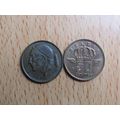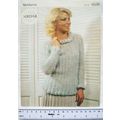Bird - Australian: Cockatoo, Rosella, Kookaburra 1990s
- Condition : Used
- Dispatch : 2 Days
- Brand : None
- ID# : 34042982
- Quantity : 1 item
- Views : 423
- Location : United Kingdom

- Seller : justthebook (+1704)
- Barcode : None
- Start : Sun 14 Nov 2010 19:11:17 (EDT)
- Close : Run Until Sold
- Remain : Run Until Sold
Checks/Cheques
 for 1 item(s) edit
for 1 item(s) edit
Shipping Calculator
More Listings from This Seller view all
Seller's Description
- Postcard
- Picture / Image: Cockatoo, Rosella, Kookaburra
- Publisher: Bartel Collectors World
- Postally used: yes
- Stamp: removed
- Postmark(s): Perth 18 April 1995
- Sent to: Marks Tey, Colchester, England
- Notes & Key words:
------------------------------------------------
Postage & Packing:
UK (incl. IOM, CI & BFPO): 99p
Europe: £1.60
Rest of world (inc. USA etc): £2.75
No additional charges for more than one postcard. You can buy as many postcards from me as you like and you will just pay the fee above once. (If buying postcards with other things such as books, please contact or wait for invoice before paying).
Payment Methods:
UK - PayPal, Cheque (from UK bank) or postal order
Outside UK: PayPal or Google Checkout ONLY please. NO non-UK currency checks or money orders (sorry).
NOTE: All postcards are sent in brand new stiffened envelopes which I have bought for the task. These are specially made to protect postcards and you may be able to re-use them. In addition there are other costs to sending so the above charge is not just for the stamp!
----------------------------------------------
Text from the free encyclopedia WIKIPEDIA may appear below to give a little background information:
*************
A cockatoo is any of the 21 bird species belonging to the family Cacatuidae. Along with the Psittacidae family (the true parrots) and the Nestoridae family, they make up the order Psittaciformes. The name cockatoo originated from the Malay name for these birds, kaka(k)tua (either from kaka "parrot" + tuwah, or "older sister" from kakak "sister" + tua, "old"). Placement of the cockatoos as a separate family is fairly undisputed, but it is not resolved whether or not other living lineages of parrots (such as the lories and lorikeets) are as distinct as they appear. The family has an Australasian distribution, ranging from the Philippines and the eastern Indonesian islands of Wallacea to New Guinea, the Solomon Islands and Australia.
Cockatoos are, on average, larger than true parrots; however, the Cockatiel, the smallest cockatoo, is a small bird, while some of the largest parrots, including the Hyacinth Macaw (the longest parrot) and the flightless Kakapo (the heaviest parrot), are not cockatoos. Their plumage is generally less colourful than that of the other parrots, being mainly white, grey or black with some colour elsewhere. They have strong bills and feet, and are instantly recognisable by their showy crests. The diet of the cockatoos is composed of seeds, tubers, corms, fruit, flowers and insects. They often feed in large flocks, particularly if they feed on the ground. Cockatoos are monogamous and nest in tree hollows.
Cockatoos are popular birds in aviculture; although, for some species, the largely illegal trade in wild-caught parrots has threatened their survival. Some cockatoo species are threatened by habitat loss and particularly by the loss of suitable hollows for nesting as large, mature trees are cleared; conversely, some species have adapted well to human changes and are considered agricultural pests.
A rosella is one of five to eight species of colorful Australian parrots in the genus Platycercus. Platycercus means "broad-tailed" or "flat-tailed", reflecting a feature common to the rosellas and other members of the broad-tailed parrot tribe. Their diet is mainly seeds and fruit.
Kookaburras (genus Dacelo) are large to very large (total length 28–42 cm/11-17 in) terrestrial kingfishers native to Australia and New Guinea, the name a loanword from Wiradjuri guuguubarra, which is onomatopoeic of its call.
Kookaburras are best known for their unmistakable call, which is uncannily like loud, echoing human laughter — good-natured, but rather hysterical, merriment in the case of the well-known Laughing Kookaburra (Dacelo novaeguineae); and maniacal cackling in the case of the slightly smaller Blue-winged Kookaburra (D. leachii). They are generally not closely associated with water, and can be found in habitats ranging from humid forest to arid savanna, but also in suburban and residential areas near running water and where food can be searched for easily.
Listing Information
| Listing Type | Gallery Listing |
| Listing ID# | 34042982 |
| Start Time | Sun 14 Nov 2010 19:11:17 (EDT) |
| Close Time | Run Until Sold |
| Starting Bid | Fixed Price (no bidding) |
| Item Condition | Used |
| Bids | 0 |
| Views | 423 |
| Dispatch Time | 2 Days |
| Quantity | 1 |
| Location | United Kingdom |
| Auto Extend | No |

















